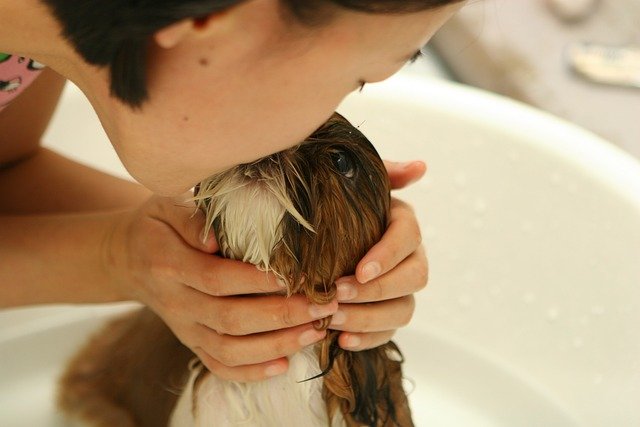Small Dogs Needing Homes: Practical Guide to Adoption, Care, and Rehoming
Small dogs are often overlooked, yet they bring big personalities and deep companionship to households of all sizes. This guide explains why many end up in shelters, how to decide if a small breed fits your lifestyle, and how to prepare, adopt responsibly, and support ethical rehoming when circumstances change.

Why small dogs need homes
Shelters and rescues frequently see small dogs surrendered for reasons that have little to do with temperament. Life changes, housing rules, medical costs, and unrealistic expectations are common drivers. Some adopters underestimate exercise and training needs, assuming smaller size means less responsibility. Others purchase on impulse from unverified sellers, then struggle with behavior or health issues. Understanding these patterns helps prospective adopters focus on prevention—choosing reputable sources, planning for long-term care, and matching energy levels—so fewer small dogs cycle back into shelters.
Assessing suitability and lifestyle fit
Start with daily rhythm and energy: many small breeds are lively, needing regular walks, enrichment, and play. Consider your work hours, travel, and access to outdoor spaces. Factor in noise sensitivity in apartments, as some small dogs are vocal. Grooming varies widely; long-coated or curly-coated breeds require regular brushing and professional grooming. Budget time and funds for training, preventive veterinary care, and supplies. If children or other pets are in the home, look for a dog with a known history and temperament assessment. Fostering first—when available—can be a helpful step to test compatibility without rushing into a permanent commitment.
Preparing your home and family
Create a safe, quiet area with a bed or crate, and remove hazards at small-dog height: dangling cords, toxic houseplants, unsecured trash, and small objects that can be swallowed. Use baby gates to manage space, especially during early adjustment. Equip essentials: well-fitted harness, flat leash, ID tags, microchip registration information, food and water bowls, and an appropriately sized crate. Set family rules: establish consistent cues, feeding routines, and boundaries (e.g., no open doors or unsupervised access to balconies). For households with children, practice gentle handling and teach how to recognize canine stress signals such as yawning, lip-licking, and turning away.
Finding reputable rescues and shelters
Focus on organizations that prioritize transparency: they should provide medical records, behavioral observations, spay/neuter policies, and adoption counseling. Many reputable groups conduct home checks or reference calls to ensure a sound match. Use national databases and local services to widen your search while staying within reasonable travel distance. Verify nonprofit status or municipal oversight where relevant, and read clear, written adoption agreements. Be cautious of unverifiable online listings and sellers who won’t allow in-person visits or offer health documentation. When in doubt, consult veterinarians or experienced trainers for guidance on credible sources in your area.
Health, training, and ongoing care
Schedule a veterinary check within the first week, review vaccination history, parasite prevention, dental status, and discuss nutrition tailored to size and age. Small dogs are prone to dental disease, so daily or frequent brushing and periodic cleanings may be recommended. Begin positive-reinforcement training immediately: reward calm behavior, teach a solid recall, and establish polite leash skills. Provide mental enrichment—puzzle feeders, scent games, and short training sessions—to channel energy productively. Monitor weight closely; small bodies can gain quickly on extra treats. Keep an updated routine for grooming, nail trims, and safe exercise suited to your dog’s build and stamina.
Below are examples of established organizations and platforms that facilitate ethical adoption or support responsible rehoming across different regions.
| Provider Name | Services Offered | Key Features/Benefits |
|---|---|---|
| Petfinder (platform) | National shelter/rescue listings | Broad searchable database, filters by size/age, adoption education |
| Adopt-a-Pet (platform) | Listings from shelters/rescues | Verified partner organizations, alerts for matches, resources for adopters |
| Best Friends Animal Society (US) | Adoptions, foster, community programs | Lifesaving centers, transport partnerships, behavior support |
| ASPCA (US) | Adoption, foster, cruelty response, resources | Adoption centers in select cities, vet and behavior guidance, education |
| RSPCA (UK) | Adoption via branches, welfare support | Nationwide network, home checks, post-adoption support |
| Battersea (UK) | Dog and cat adoption, behavior support | Behavior assessments, training advice, lifelong advice line |
| RSPCA Australia | Adoption and welfare services | State-based shelters, clear policies, microchipping/desexing |
| SPCA Singapore | Adoption, animal welfare education | Health checks, counseling, transparent adoption procedures |
Prices, rates, or cost estimates mentioned in this article are based on the latest available information but may change over time. Independent research is advised before making financial decisions.
Ethical rehoming when plans must change
Sometimes rehoming is the responsible choice—major health changes, unsafe housing, or unresolvable compatibility issues can make continued ownership unfair to the dog. Prioritize returning the dog to the original rescue if required by contract; many offer support or take-back policies. If working independently, disclose all medical and behavioral information, and avoid informal giveaways that bypass screening. Ask for references, conduct meet-and-greets, and use written agreements that transfer microchip and veterinary records. Coordinating with local services such as trainers or veterinarians can improve placement success and reduce the likelihood of repeated transitions.
Building a stable routine for success
The first month sets the tone. Keep schedules predictable: meals, walks, rest, and training at consistent times. Manage introductions gradually—new people, pets, and environments in short, positive sessions. Track progress with a simple diary of meals, toileting, training cues, and any stress signals to inform adjustments or professional guidance. Stability, enrichment, and patient reinforcement help small dogs gain confidence and settle into long-term homes, reducing the risk of returns and ensuring well-being for both the dog and the household.
Conclusion
Adopting or rehoming a small dog is a thoughtful process that balances compassion with planning. By assessing lifestyle fit, preparing the environment, choosing reputable organizations, and committing to preventive care and training, families can offer stable, supportive homes. Ethical practices at each step protect dogs and people, improving outcomes across communities worldwide.




